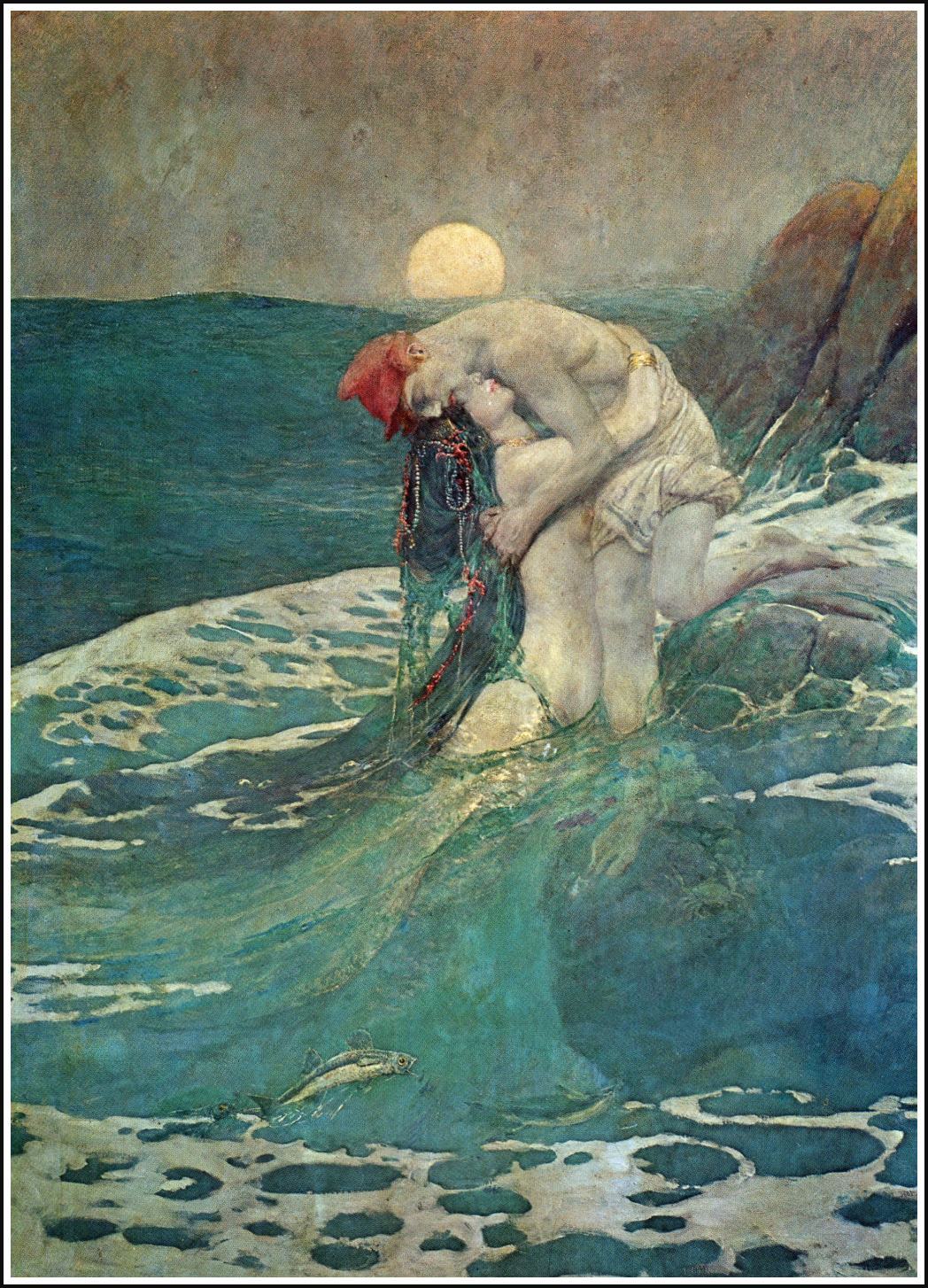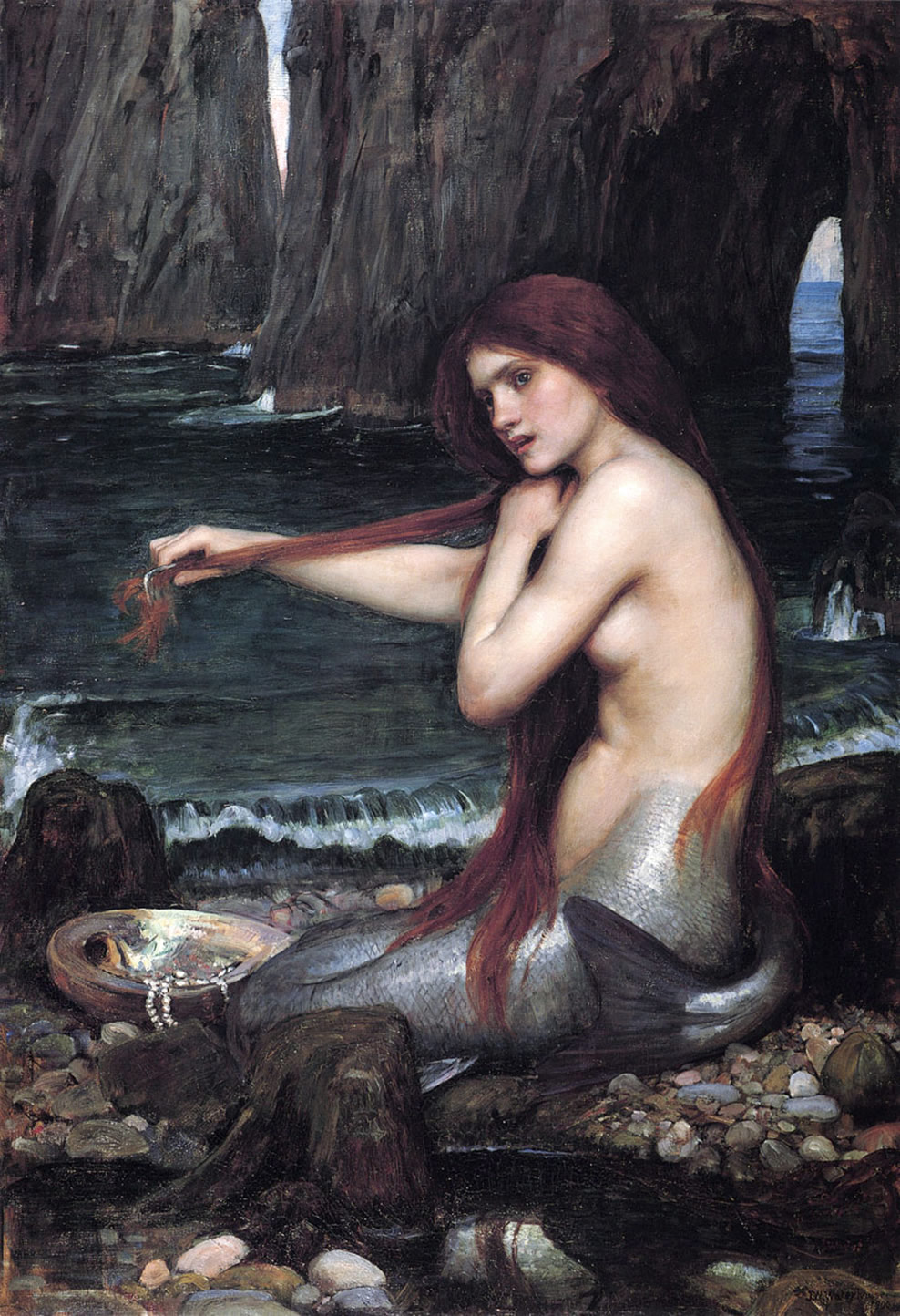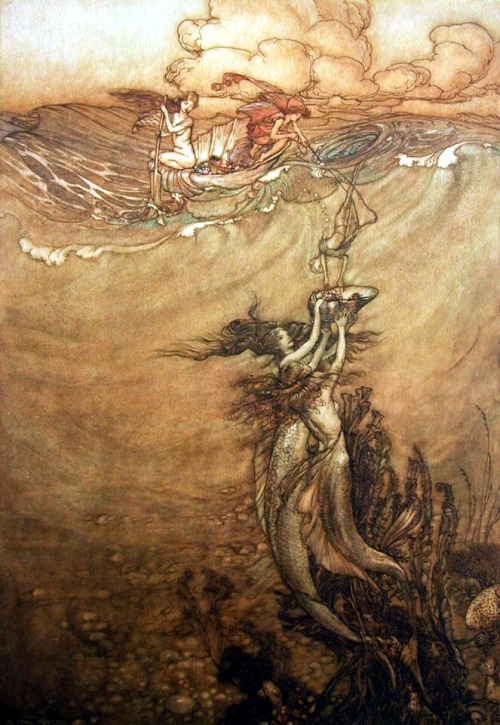 |
| John William Waterhouse, Hylas and the Nymphs, 1891 |
 |
| Odin in an Icelandic illuminated manuscript (18th century) |
 |
| From 'The Secret Teachings of all Ages', Manly P. Hall, 1928 |
We look to the water with great curiosity and fear, there is an abundance of beauty in the fathoms below, but also much to wonder. A small five percent is what we have explored within our ocean. Every year new species of ocean life is discovered and myths shelved in antiquity emerge to startle our senses. Several decades ago the Giant Squid was only a legend attached to the likes of Jules Verne. Now science has begun to speculate what lies below the ocean trenches, what lies below where technology can not meander?
 |
| National Oceanic and Atmospheric Administration, 2014 |
The legend of the mermaid, as modern culture calls her, has stood the test of time. Christopher Columbus himself documented sightings of various sea-creatures in 1493, sailing the coast of Hispaniola. He documented three "female forms" which "rose high out of the sea, but were not as beautiful as they are represented". He reported that they were ugly and fat. Perhaps the creatures were that of Manatees, or sea-cows, whose big torsos might be mistaken in murky waters. Historically these creatures have continued to trick the eyes of sailors, but sailors have a tendency to lean towards superstition. Who can blame them? Long periods of time at sea, strange figures in the water, sometimes the eye is not swift enough to follow the quick athletic torsos. Eventually you wonder if your eyes are simply playing tricks.
 |
| 'The Mermaid', Howard Pyle, 1910 |
As Celtic and European cultures blamed the fey folk and little people for devilish things, the sea Captains and sailors too had to blame something for the many unusual experiences on the ocean, sounds emanating in the distance, cries in the cold night, perhaps human, perhaps not. The famed pirate Blackbeard documented records of enchanted seas and areas of ocean that his crew needed to avoid, claiming that specific areas of charted waters were 'enchanted'. Pirates were deathly afraid of merfolk predominantly mermaids. Early superstitions claimed that the females were more dangerous than their male counterparts, the males dwell in a bit more secrecy and are known never to come to the surface of the water. The females are historically known to be more curious observed as beautiful, they can be related to the famed Sirens of the Greek Pantheon.
 |
| 'A Mermaid', John William Waterhouse, 1900 |
Know you the Nixes, gay and fair?
Their eyes are black, and green their hair--
They lurk in sedgy shores.
Their eyes are black, and green their hair--
They lurk in sedgy shores.
---Old German Text
Nixes were kind enough to lead their victims to death by drowning, Undine's were not so quick, with their malevolence of torture. 'The golden-haired undines possess exquisite treasures of pearl and nacre but mortals who try and steal these wonders are in danger of remaining forever imprisoned in the nymphs' magnificent underwater palaces.' (Arthur Rackham, Jewels from the Deep.)
 |
| Jewels from the Deep, Arthur Rackham 1909 |
undine, also spelled Ondine, mythological figure of European tradition, a water nymph
who becomes human when she falls in love with a man but is doomed to
die if he is unfaithful to her. Derived from the Greek figures known as Nereids, attendants of the sea god Poseidon.
---Encyclopedia Britanica
New Latin undina, from Latin unda (meaning) wave
First Known Use: 1819
---Merriam Webster
 |
| Classic wood engraving by George Heywood Maunoir Sumner |
Source Material:
- Wikipedia.org
- Merriam-webster.com
- abuddhistlibrary.com---Search: Elementals
- sacred-texts.com
- norse-mythology.org
- oceanservice.noaa.gov/facts/exploration.html (National Ocean Service)
- The Enchanted World Series, Water Spirits, Time-Life Books 1984
- An Encyclopedia of Fairies, Katherine Briggs, Pantheon Books 1976
- Faeries and Demons and other Magical Creatures, Edouard Brasey, Barnes and Noble Books 2003
No comments:
Post a Comment